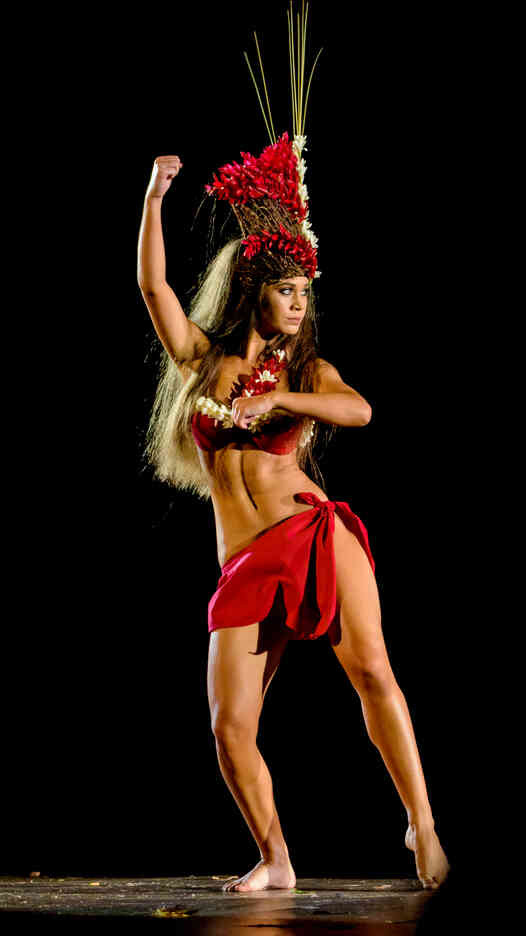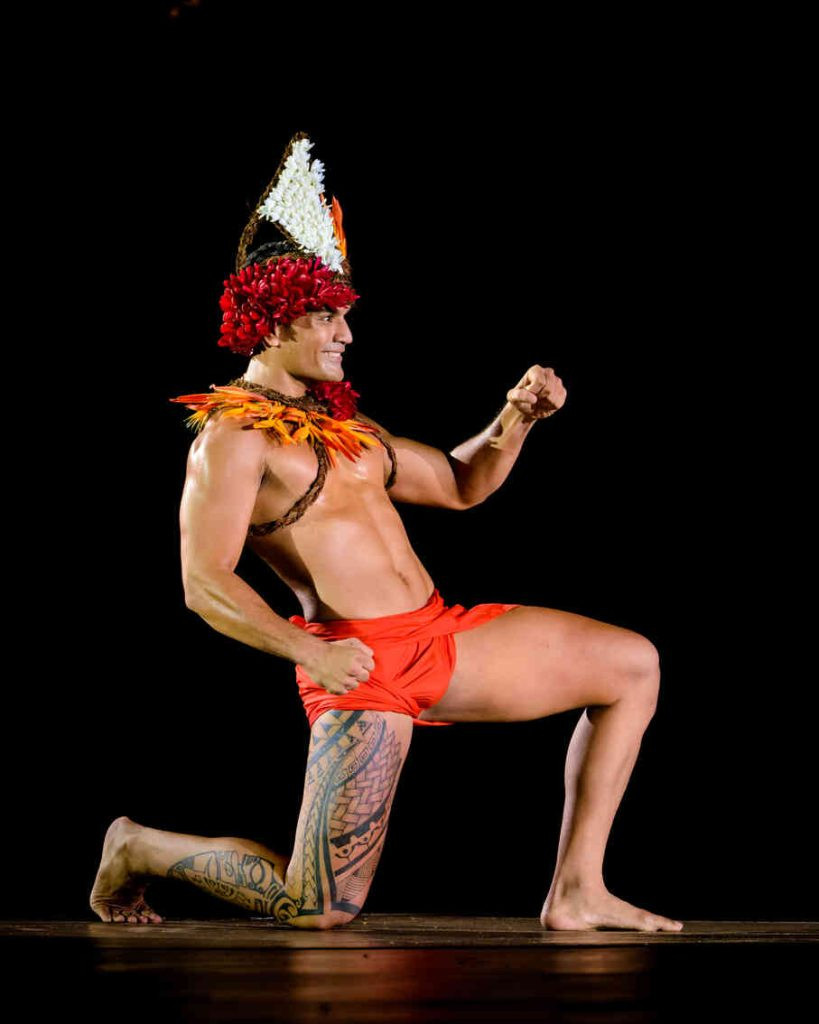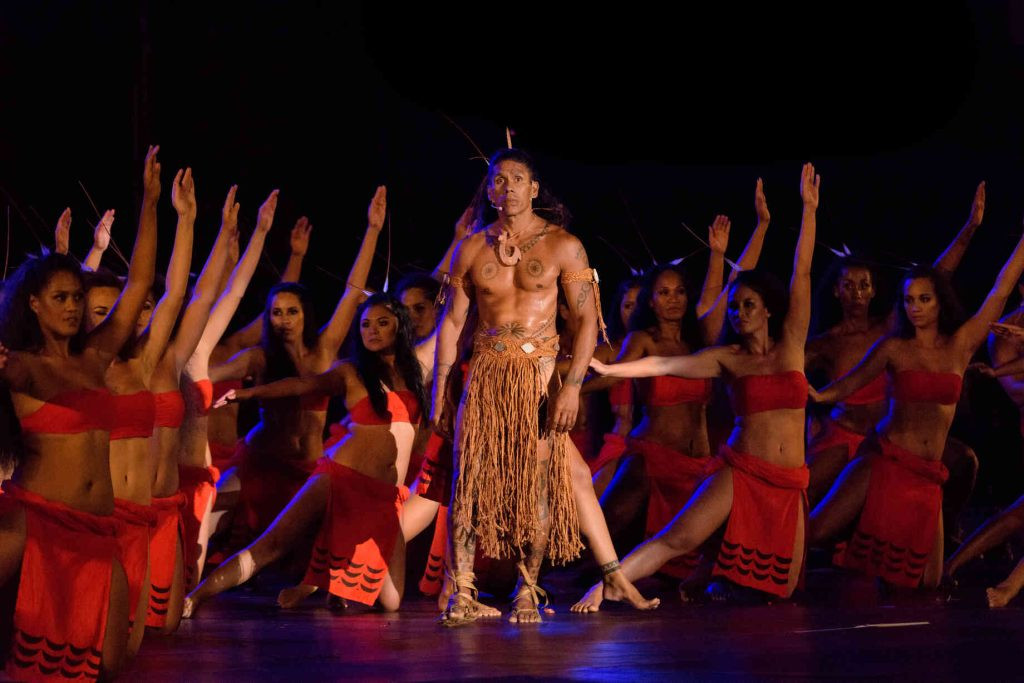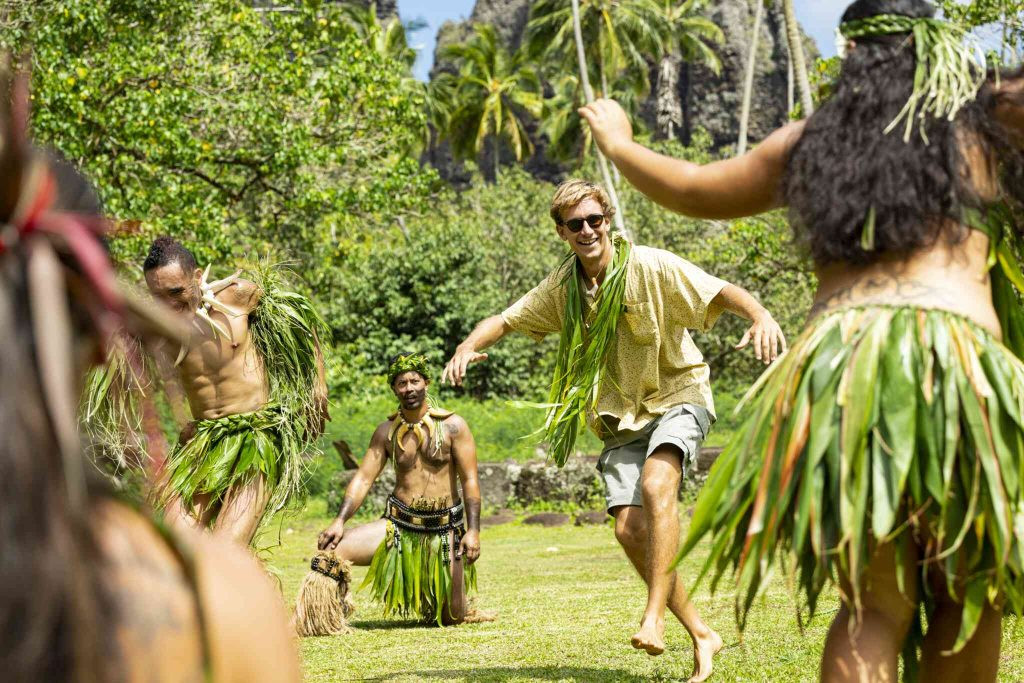Tahitian Dance, known as ‘ori Tahiti, bursts forth as a vibrant, sensual, and captivating expression of the Polynesian spirit. Deeply rooted in the culture and history of The Islands of Tahiti, it transcends mere performance, evolving into a profound art form. This dynamic dance serves as a powerful conduit for conveying emotions, narrating stories, and passing down cherished traditions through generations.
With its pulsating rhythms, graceful yet sensual movements, and expressive gestures, the unique traditional art of ‘ori Tahiti stands as an indispensable cornerstone of Tahitian culture. Having once faced near extinction, its allure and prestige are now captivating audiences worldwide.
A Tapestry of Tradition
The origins of Tahitian dance are steeped in history, dating back centuries. In ancient times, these dances, accompanied by music and chants, were integral to ceremonies honoring the old gods and celebrating significant life events such as weddings, births, and bountiful harvests. For the Polynesian vahine (women), ‘ori Tahiti became a refined and sensual language of expression. Its evolution has been particularly shaped by the emergence of the Heiva i Tahiti festival. This exhilarating and colorful event is a grand celebration of traditional music and dance. Spanning a month, the festival showcases electrifying performances from dance troupes across The Islands of Tahiti, enchanting both visitors and locals alike.
 Heiva i Tahiti dancer © Dimitri Nguyen VerdenetA Tahitian dancer in traditional costume performs at the Heiva i Tahiti festival, showcasing the cultural richness of Polynesian dance.
Heiva i Tahiti dancer © Dimitri Nguyen VerdenetA Tahitian dancer in traditional costume performs at the Heiva i Tahiti festival, showcasing the cultural richness of Polynesian dance.
 Heiva i Tahiti dancer © Dimitri Nguyen VerdenetA male dancer at Heiva i Tahiti displays the strength and artistry of Tahitian dance, a key element of Polynesian heritage.
Heiva i Tahiti dancer © Dimitri Nguyen VerdenetA male dancer at Heiva i Tahiti displays the strength and artistry of Tahitian dance, a key element of Polynesian heritage.
 Dance group performing at Heiva i Tahiti © Dimitri Nguyen VerdenetA vibrant Tahitian dance group performs at Heiva i Tahiti, illustrating the communal and celebratory aspects of ‘ori Tahiti.
Dance group performing at Heiva i Tahiti © Dimitri Nguyen VerdenetA vibrant Tahitian dance group performs at Heiva i Tahiti, illustrating the communal and celebratory aspects of ‘ori Tahiti.
Today, ‘ori Tahiti thrives as an exceptionally popular and dynamic art form. It’s a common experience for vahine in The Islands of Tahiti to have participated in a dance group at some point in their lives. The elaborate and vibrant costumes are essential to this striking display of a proud ancestral culture. Among the most recognized Tahitian dances are the energetic and festive tāmūrē, and the ‘ōte’a, a more structured and precise warrior dance. Each archipelago within French Polynesia also boasts distinctive dances, such as the pe’i from the Gambier Islands and the renowned haka of the Marquesas Islands.
A Universal Language of Movement
Tahitian dance serves as a visual manifestation of a unique and ancient culture. Every movement and gesture carries profound meaning, referencing the traditions, legends, and historical narrative of French Polynesia. The inherent sensuality of ‘ori Tahiti unfortunately led to its suppression by early Protestant and Catholic missionaries. However, resilient Tahitian mothers ensured the art’s survival by secretly passing down the gestures and movements to their daughters. This act of cultural preservation proved crucial in the 1950s when Madeleine Moua spearheaded the revival of this once-forbidden art, finding that the essential elements had been safeguarded.
 Dance initiation with a dance group in Nuku Hiva © Grégoire Le BaconVisitors participate in a Tahitian dance initiation in Nuku Hiva, experiencing the cultural immersion offered by Polynesian dance traditions.
Dance initiation with a dance group in Nuku Hiva © Grégoire Le BaconVisitors participate in a Tahitian dance initiation in Nuku Hiva, experiencing the cultural immersion offered by Polynesian dance traditions.
During a visit to The Islands of Tahiti, numerous opportunities arise to witness captivating displays of ‘ori Tahiti. Beyond the visual spectacle and vibrant energy of the performances, it’s important to remember that for Polynesians, dance is fundamentally a form of communication. It is a universal language employed to transmit their distinct identity and rich cultural heritage to future generations and to welcome visitors from across the globe.
